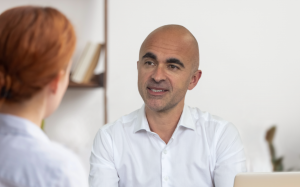We can be authentic problem solvers, or we just really hate them. But in any of the cases, when problems arise, we experience some feelings, and usually not the good ones: we may suffer some panic attacks, we can feel blocked, we get emotional, we blame…, independently on the grade we suffer this kind of reactions, we usually experience them.
One thing is what we feel, other thing is what we can do with it. We can complain or we can be pragmatic and start to move forward.
Let me share with you the 7 steps to simplify your problems, that I always use in Coaching environment (individual or team), at personal level, and as training framework. 7 steps that you can use daily:
1. Take ownership.
The less time you procrastinate, the less time will separate you from the solution. It’s understandable you want to be a little emotional about that, that’s fair, understandable, and sometimes we need it. But be conscious of it, that you need that little time of mourning, and know that the sooner you get out of that state of mind, the closer you will start to move forward.
So, the first important thing is to assume that you need to deal with it. Stop making excuses and move on.
2. From Emotional to Rational.
Once you take ownership, translate your emotions into something rational. Translate it to the practical and tangible side of the situation.
How to do that? With a roleplay exercise, that can be simpler or more complex depending on the context/problem:
- Play to be in other’s positions, looking from the outside.
- Analise the different perspectives.
- Build a common point of view.
Transform this rational & common point of view in a 30’ elevator speech… if you get it, you have the problem well identified. It looks “basic”, but most of the times, the problems are not well-solved because they are not well-identified.
3.- Break the problem in pieces.
The problems, independently om their size, can be always simplified. How should we start? After transforming it into a rational one, lets break it into pieces.
The main benefit is to transform a BIG problem in smaller and more accesible problems.
When we break it in pieces, what do we find?
- The things we cannot control – so forget them!
- The things we can control. And we can deal with them step by step, in a simpler way. Let’s make micro-diagnostics of the situation.
- The things we can delegate or outsource.
4. Draw the future.
Once we have the problem broken in pieces, it’s time to think how we would like the situation will be without the problem. And we need to ask ourselves the right questions. Some examples:
- What need to happen to make the problems disappear? What need to happen to make the micro-problems disappear?
- How success looks like after being “suffering” this problem?
- If I need to draw the situation from the scratch, how would it be?
- What will make me happy?
- Etc.
The final answer to those questions will represent our final Goal.
5. Design alternative ways to solve the problem.
Once defined the final goal, lets design alternatives to achieve it. This is what we do in Coaching environment, we stablish the goal (what’s success for you), and then, through a deep exploration we design different ways to achieve them.
To make it easier, we can draw alternatives for any single micro-problem. And the result will depend on you own election, as you will consider the PROs & CONs of any of them.
6. Communicate.
It’s key to communicate, as one of the main fears we have normally when we are facing problems it is…” how I’m going to tell this to…”. So, communicate it is a must, but we should do it in the right way.
6.1 I prefer to communicate as soon as I discover the problem. If it’s the case, I communicate in a very factual way: “this happened, this is what we plan to do following these steps, and as soon as I have news, I will keep you posted”. We need to show control of the situation.
6.2 If we communicated in a more advanced stage of the problem solution process: “This happened, we analyse it, and we focus on what we can control. With that in mind, our objective will be X, and we have drawn several alternatives to achieve, being the alternative A, the preferred one”. Again, very factual and showing the full control of the situation.
7. Learnings.
Be sure, that when you achieve your goal, you take the right learnings with 2 objectives in mind:
- How to avoid the same problem in future situations
- If the problem happens in any case, how to solve in a more efficient way due to the learnings of the process.
Then, to close the process we only need to communicate to all the people involved, as your learnings can be valuable for them in future situations.
Solving Problem Summary:
This problems simplification process is at the heart of what I do in individual or team coaching sessions. With the use of some tools and coaching competencies, I put the focus to unlock the situation and start to make progress to solve.
This is the 7 steps process to use every single day (as problems will continue happening): Assume control, Rationality, Break in Pieces, Build Objective, Draw Alternatives, Communicate & Learn.










